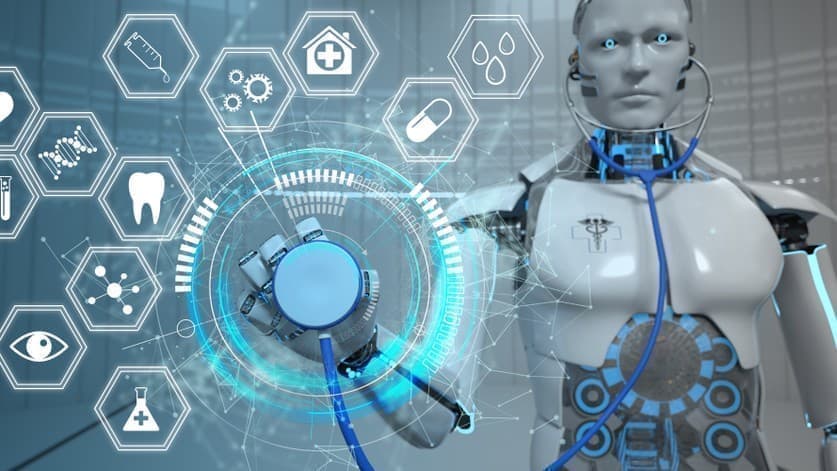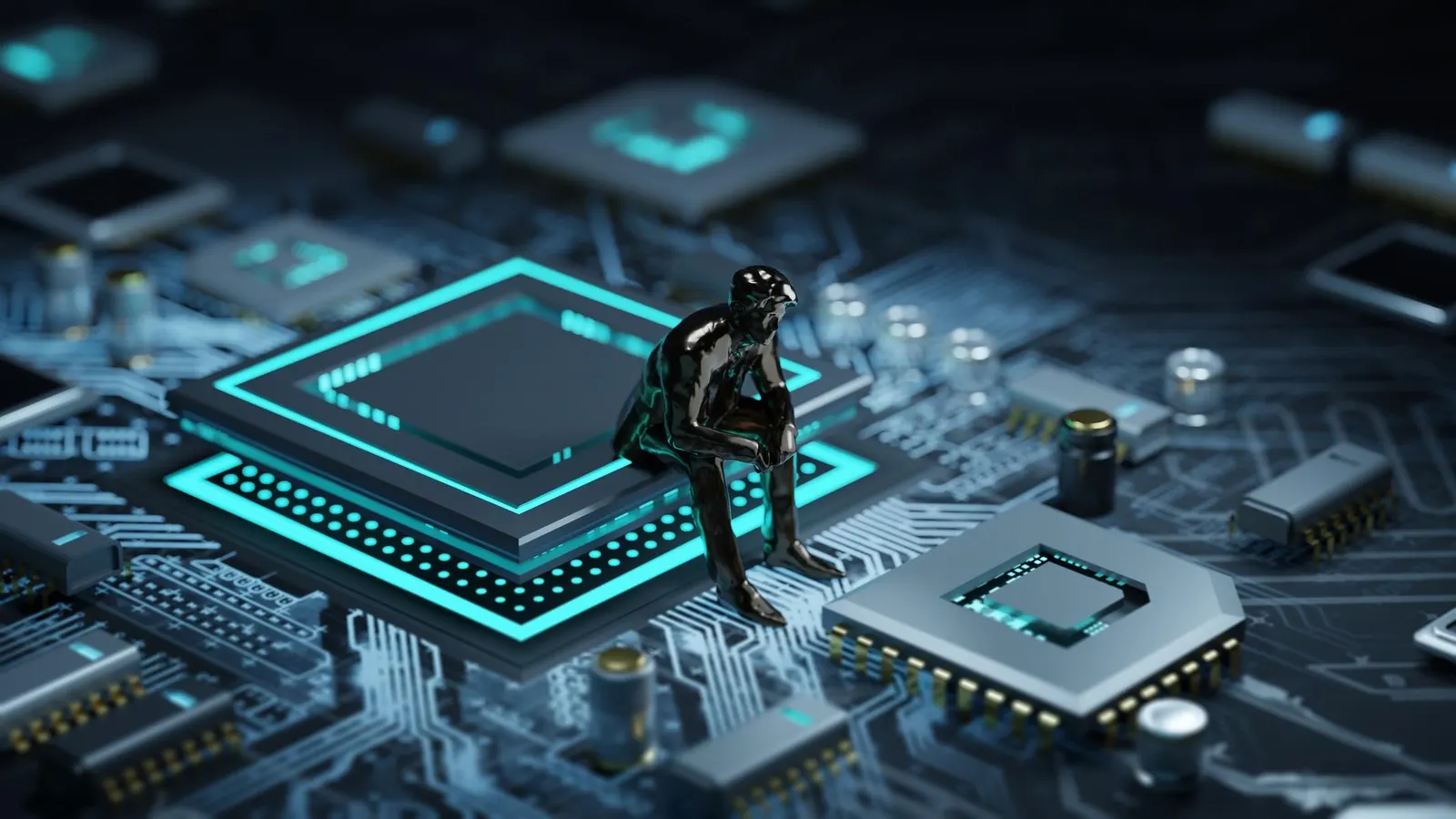Artificial intelligence is consuming energy at an unprecedented rate, with data centers now burning through electricity faster than small countries. While tech giants scramble to secure more power sources even restarting nuclear reactors a quieter revolution is happening inside the chips themselves. The real solution to AI’s energy problem may not be building more power plants, but building smarter silicon.
The numbers tell a stark story. Goldman Sachs predicts data center power consumption will surge by 160% by 2030. The World Economic Forum estimates AI energy demands are growing 50% annually through the decade. Microsoft has committed to helping restart Three Mile Island’s nuclear reactor just to meet compute demand. Google is investing in fusion energy. These aren’t long-term sustainability initiatives they’re desperate measures to keep AI systems running.

But while headlines focus on where to find more energy, engineers are asking a different question: What if we didn’t need so much energy in the first place?
The Hidden Waste Inside Every AI Chip
Most data centers operate their AI chips with significant energy safety margins built-in buffers designed to protect against power fluctuations, wear-and-tear, and unpredictable workloads. These margins make sense in theory, but in practice, they represent massive energy waste.
Israeli startup Proteantecs has found a way to reclaim that waste. By embedding monitoring agents directly onto silicon chips, the company helps data centers reduce AI server power consumption by up to 14%. That might sound modest, but across thousands of GPUs running 24/7, it translates to millions in annual savings.
“Those buffers are mostly guesswork,” explains Uzi Baruch, Proteantecs’ chief strategy officer. “Our technology measures them precisely so data centers can reclaim unused power while keeping systems safe.”
The company’s agents monitor each chip’s performance in real-time, measuring its “distance to failure” and allowing systems to dynamically adjust voltage without overprovisioning. In large training clusters where an 8-GPU NVIDIA H100 node can draw up to 8.4 kW under heavy workloads, even a 14% reduction compounds quickly.
Beyond energy savings, the real-time telemetry prevents silent faults that could corrupt expensive model training runs. “Nobody wants to finish training a multimillion-dollar LLM only to realize there were silent data corruptions,” Baruch notes.
Rethinking Chip Architecture From the Ground Up
While Proteantecs optimizes existing chips, other companies are redesigning silicon architecture entirely. The strategy mirrors how graphics processing transformed computing specialized chips built specifically for new computational demands often outperform repurposed hardware.
Nvidia, despite dominating the AI chip market, faces growing competition from startups and tech giants developing inference-focused processors. Inference the process of generating AI responses from user prompts represents a different computational challenge than training AI models, and purpose-built chips can deliver dramatic efficiency gains.
Chip startup Groq claims its inference processors can deliver AI responses faster than Nvidia’s best chips while consuming one-third to one-sixth as much power. The secret lies in embedding memory directly within the chip rather than keeping it separate, eliminating energy-intensive data transfers.
Similarly, Positron AI has raised $51.6 million to develop simplified chips with narrower capabilities that perform specific tasks more efficiently. CEO Mitesh Agrawal claims their next-generation systems will deliver two to three times better performance per dollar and three to six times better performance per unit of electricity compared to Nvidia’s roadmap.
The Tech Giants Strike Back
Major cloud providers aren’t waiting for startups to solve their energy problems. Google, Amazon, and Microsoft have launched multiyear efforts to build custom inference chips for their internal AI tools and cloud services.
Google’s latest Ironwood TPU (Tensor Processing Unit) represents years of internal development focused on AI-specific workloads. Amazon’s Annapurna Labs is building Inferentia chips designed specifically for machine learning inference. Microsoft continues expanding its custom silicon initiatives.
These efforts reflect more than cost savings they represent existential concerns about energy availability. As Mark Lohmeyer, Google Cloud’s VP of AI and computing infrastructure, notes: “No matter how much more efficiently we can deliver AI, there is no end in sight to growth in demand for it.”
Beyond Individual Chips: System-Wide Optimization
Arm, known for energy-efficient smartphone processors, is applying its efficiency expertise to data center infrastructure. Rather than just building faster chips, the company’s “Total Compute” strategy optimizes entire systems from processing cores to memory access and data movement.
“It’s paramount to reduce the power requirements of AI models,” says Eddie Ramirez, VP of Go-To-Market for Arm’s infrastructure line. “By maximizing what’s already in place, companies can reduce both cost and environmental load.”
Arm’s recent Neoverse platforms support advanced math operations like SVE2 and BF16, accelerating AI model execution while preserving energy efficiency. The architecture is already deployed across Amazon, Microsoft, Google, and Oracle cloud platforms.
Using AI to Design Better AI Chips
Perhaps the most meta approach comes from Cadence Design Systems, which uses AI to design more efficient AI chips. The company’s Cerebrus AI Studio platform, now used in over 1,000 chip projects, employs agentic AI to automate and accelerate system-on-a-chip design.
According to Cadence, this AI-driven approach has reduced chip delivery times by up to 10X while reducing power consumption and physical footprint by as much as 20%. The company’s Millennium M2000 Supercomputer uses GPU acceleration and multiphysics simulation to boost design speed by 80X.
“At Cadence, we’re not just designing for AI; we’re using AI to design,” explains Ben Gu, corporate VP for multiphysics system analysis. The company envisions a five-level roadmap toward autonomous chip design, eventually creating silicon-level agents that autonomously design, validate, and optimize in continuous loops.
The Reality Check: Efficiency vs. Demand

Despite these promising developments, industry veterans remain cautiously optimistic. One truism of computing history is that whenever engineers make something faster or more efficient, consumers and businesses find ways to use all the performance gains—and then some.
Google’s Lohmeyer acknowledges this reality: consumer and business adoption of more demanding AI models means that no matter how efficiently companies deliver AI, demand continues growing exponentially.
Andrew Wee, head of hardware for Cloudflare and a 30-year Silicon Valley veteran, believes the current trajectory is unsustainable. “I can’t wrap my head around” the projected power demands of future AI supercomputers, he says. “We need to find technical solutions, policy solutions and other solutions that solve this collectively.”
Cloudflare is testing Positron’s chips in their data centers, and early results have been encouraging enough to warrant expanded trials. “If they do deliver the advertised metrics, we will open the spigot and allow them to deploy in much larger numbers globally,” Wee adds.
The Competitive Advantage Window
The race to build more efficient AI chips reflects more than environmental concerns it represents a massive competitive opportunity. Nvidia’s approximately 60% gross margins, dubbed the “Nvidia tax” by competitors, create strong incentives for alternatives.
At least a dozen chip startups are battling to sell cloud providers custom-built inference chips. The intensity of these efforts, combined with multibillion-dollar internal chip development programs at major tech companies, demonstrates how desperately the industry wants to escape dependence on a single supplier.
Jordan Nanos, an analyst at SemiAnalysis who spent a decade at Hewlett Packard Enterprise, considers many of these efficiency claims credible. However, he notes that customers evaluate more than just performance per watt flexibility, software ecosystems, and long-term support matter equally.
What This Means for the Future
The convergence of multiple chip efficiency approaches real-time optimization, specialized architectures, system-wide design, and AI-driven development suggests the industry is taking energy constraints seriously. These aren’t theoretical research projects but deployed technologies already reducing power consumption in live AI systems.
However, the fundamental tension remains: while individual companies might deliver AI more efficiently, the industry as a whole continues consuming ever more energy. Recent analysis from Anthropic suggests energy production, not data centers and chips, could become the real bottleneck for future AI development.
The next few years will determine whether chip-level efficiency gains can meaningfully bend the curve of AI energy consumption or merely slow its acceleration. What’s certain is that the companies developing these technologies today are positioning themselves for a future where energy efficiency becomes as important as raw performance.
As the industry races between energy demand and efficiency innovation, one thing is clear: the real solution to AI’s power problem won’t come from any single breakthrough, but from the accumulated effect of smarter silicon, better software, and more intelligent systems working together.
Frequently Asked Questions
Q. How much energy do AI systems actually consume?
A. Data center power consumption is projected to increase by 160% by 2030, with AI workloads driving much of this growth. A single 8-GPU NVIDIA H100 node can consume up to 8.4 kW under heavy AI training workloads equivalent to powering several homes.
Q. Are these chip efficiency improvements really making a difference?
A. Yes, but with caveats. Companies like Proteantecs are achieving 14% power reductions in deployed systems, while specialized inference chips claim 3-6X better energy efficiency. However, growing AI adoption may offset these gains at an industry level.
Q. Why can’t we just use renewable energy to power AI?
A. Scale and timing are the primary challenges. AI workloads require consistent, on-demand power that’s difficult to match with intermittent renewable sources. Even with renewable energy, reducing waste through efficient chips remains environmentally and economically beneficial.
Q. Will these new chips replace NVIDIA’s dominance?
A. It’s too early to tell. While specialized inference chips show promise, NVIDIA’s ecosystem advantages software tools, developer familiarity, and flexibility across different AI tasks create significant switching costs for customers.
Q. What happens if AI energy demand keeps growing faster than efficiency improvements?
A. Industry experts are divided. Some believe market forces will eventually constrain growth, while others worry about infrastructure bottlenecks. Energy availability, rather than chip performance, may become the limiting factor for AI development.
The Next Chapter in Computing Evolution
The battle for AI chip efficiency represents more than a technical challenge it’s a race to define the sustainable future of artificial intelligence. Companies that master the balance between performance and power consumption will shape how AI evolves over the next decade.
Whether through real-time chip monitoring, specialized architectures, or AI-designed silicon, the solutions emerging today will determine if artificial intelligence becomes an energy-constrained technology or continues its exponential growth. The stakes couldn’t be higher, and the innovation happening inside these tiny chips may be the key to AI’s long-term viability.
Click HERE For More.
